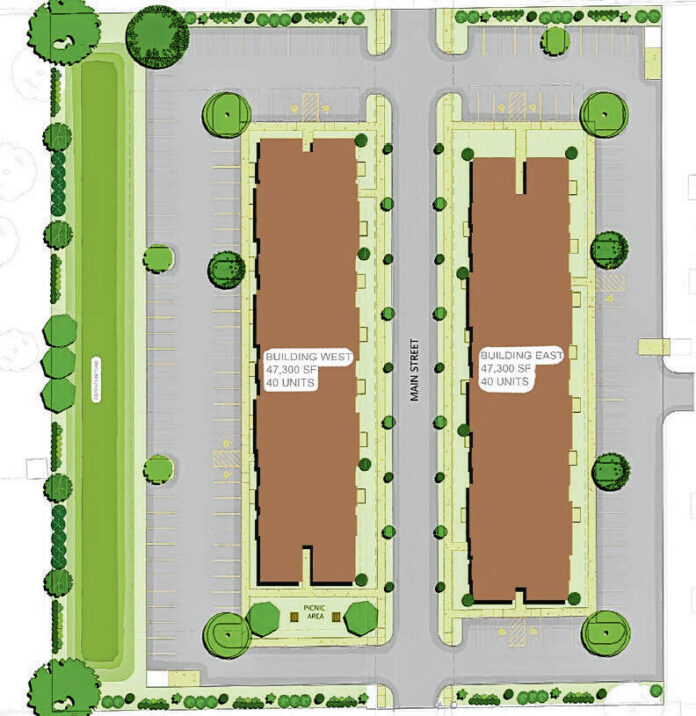FORTVILLE – A developer is asking the town of Fortville to forfeit part of the taxes it would’ve gotten from a proposed apartment development in order to make the project possible.
The request comes from Indianapolis-based Hudson Investing, which wants to build two 40-unit apartment buildings just west of Ridge View Apartments located at 550-801 N. School St., which the firm also owns.
The project is estimated to cost over $16.5 million.
After the investment Hudson Investing is able to make, as well as its construction loan and funding from its equity partner, the developer is about $1.7 million short, however.
Kent Ritter, CEO of Hudson Investing, said the gap is caused by costs associated with extending Main Street through the project area, meeting Fortville’s building material standards, the need to meet the local market’s rent rates, rising interest rates and historically high construction costs.
“We’re at the point where we’ve turned the screws as much as we can, and there’s just a gap that we can’t solve ourselves,” Ritter said at last week’s Fortville Redevelopment Commission meeting.
He’s asking town officials to approve an arrangement in which Hudson Investing would take out a 20-year bond for $2 million – encompassing its $1.7 million shortfall and additional costs like those associated with administering the bond. About $173,000 of the property taxes generated by the apartment development per year would go toward paying off that bond, Ritter said.
Over the 20-year bond period, the town is still projected to get over $800,000 in property taxes from the development, he continued.
“The risk lies on me and my company to pay that $173,000,” Ritter said. “It’s not that the town is giving money, it’s just that the town is forgoing $173,000 of the property taxes (per year) over the next 20 years. Now, right now it’s an empty field; there’s not a whole lot of property taxes. So it’s not that you’re out anything; you’re delaying a chunk of the property taxes.”
Buzz Krohn, executive partner of Westfield-based Krohn & Associates and Fortville’s municipal advisor, said that even if the development’s assessed value doesn’t grow as projected, it would still be up to Hudson Investing to pay off the bond.
“The bottom line is, if the AV doesn’t materialize, the risk is on them,” Krohn said.
The redevelopment commission, which oversees the town’s tax increment financing activities, voted 3-2 to send Ritter’s request to Fortville Town Council with no recommendation. Commission members Amy Lawson, Cheyenne Hoffa and Ed Brand voted in favor of no recommendation while Scott Meyer and Hart Summeier voted against.
Brand said he’d rather see single-family homes in that area.
Summeier said Hudson Investing could likely accomplish a less costly project in the location without the town’s help, but that it would result in lower-quality buildings with lower-income residents. He sees supporting the request as a way to help ensure a better outcome.
The town council had been considering a zoning designation the project needs earlier this summer, but put it on hold to work out possibly helping with the funding gap.
During the zoning discussions, the proposal drew opposition from those living near the site. Residents reiterated their opposition at last week’s redevelopment commission meeting, citing concerns including increased traffic near their homes after connecting Main Street to their neighborhood.
“It’s going to be really a lot of traffic,” Rose Twomey said.
Called Ridgeview West, the buildings would be 47,300 square feet each and flank Main Street. The buildings would be two stories on their ends and three stories in their centers. They would include one-, two- and three-bedroom units. Exterior building materials would include fiber cement, stone and brick. The development would allow for onsite management at the existing nearby apartment complex as well.






